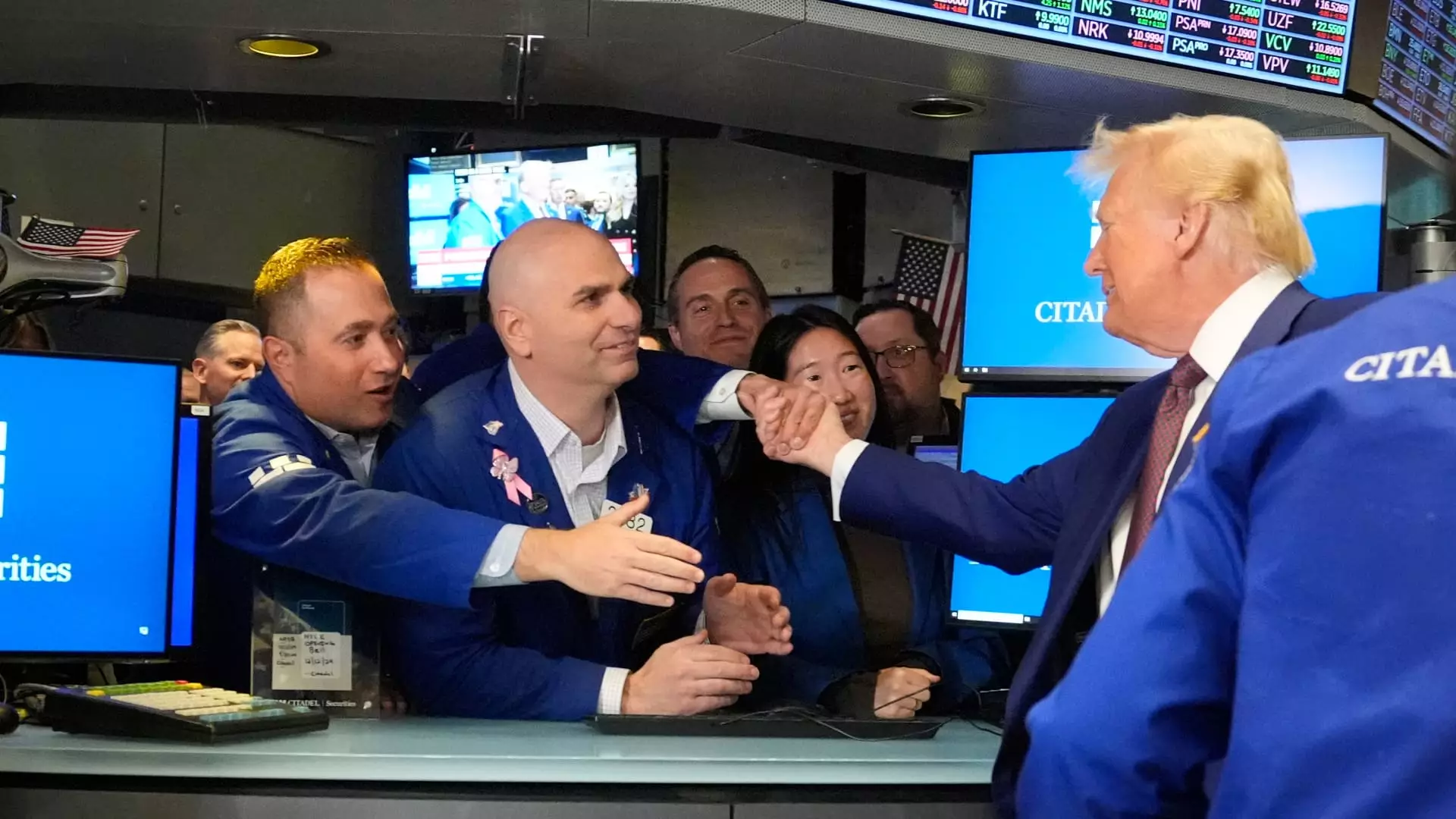On Thursday, President-elect Donald Trump made headlines as he rang the opening bell at the New York Stock Exchange, a symbolic gesture often associated with optimism and celebration in the financial world. His remarks during this event stood out, especially in their cautious tone towards immediate stock investments. Rather than buoying investor sentiment with a straightforward endorsement to buy stocks, Trump expressed hesitance about potential downturns in the market: “I don’t want to get into a situation where they do and we have a dip or something because that can always happen.” This prudent statement signaled an awareness of market volatility and the challenges ahead.
During his previous term, Trump consistently highlighted the stock market as a key indicator of his presidency’s success. Under his administration, the S&P 500 experienced a notable surge of nearly 68%, reaching unprecedented heights. This upward trajectory in stock prices can be partially attributed to significant corporate tax reforms that aimed to stimulate economic growth. Additionally, the Federal Reserve’s strategy of maintaining low interest rates played a role in fostering an environment conducive to stock market gains, providing businesses with access to cheaper capital. Such historical context underscores the complexity of market dynamics and the influence of government policies.
As he stood before Wall Street executives and investors, Trump hinted at an ambitious approach to future tax policies, promising another round of cuts. He stated, “We’re gonna do things that haven’t really been done before. We’re gonna cut taxes still further.” His proposed reduction of corporate taxes—from 21% to potentially as low as 15%—is contingent upon companies manufacturing within the United States. This strategy reflects a dual focus on bolstering domestic manufacturing while also appealing to the business community’s desire for a more favorable tax landscape. It emphasizes the administration’s commitment to fostering a business-friendly environment.
Investment titans like David Solomon from Goldman Sachs and Bill Ackman of Pershing Square were present during this pivotal moment, showcasing the interconnection between government leadership and financial markets. Following the event, Ackman articulated a prevalent sentiment among business leaders: there is a correlation between thriving businesses and overall economic prosperity. He expressed that increased business success translates to higher wages, job growth, and enhanced opportunities for the nation as a whole. Such perspectives are crucial for understanding how investor confidence can be closely aligned with effective governance.
Even amid his cautious remarks regarding immediate stock purchases, Trump maintained an optimistic long-term outlook, suggesting that the United States is on a path to become “a country like no other.” This assertion highlights a broader narrative of economic resilience and potential growth in the face of adversity. As the nation approaches a new era under Trump’s leadership, stakeholders from various sectors are left to consider how these policies will shape the economic landscape moving forward.
While the ringing of the bell at the Stock Exchange represents a moment of excitement, Trump’s careful navigation of investor sentiment reveals an underlying strategy that aims to balance immediate caution with long-term economic growth. His vision combines elements of fiscal policy reforms, commitment to domestic production, and an expectation of sustained market performance that could have lasting implications.

Leave a Reply